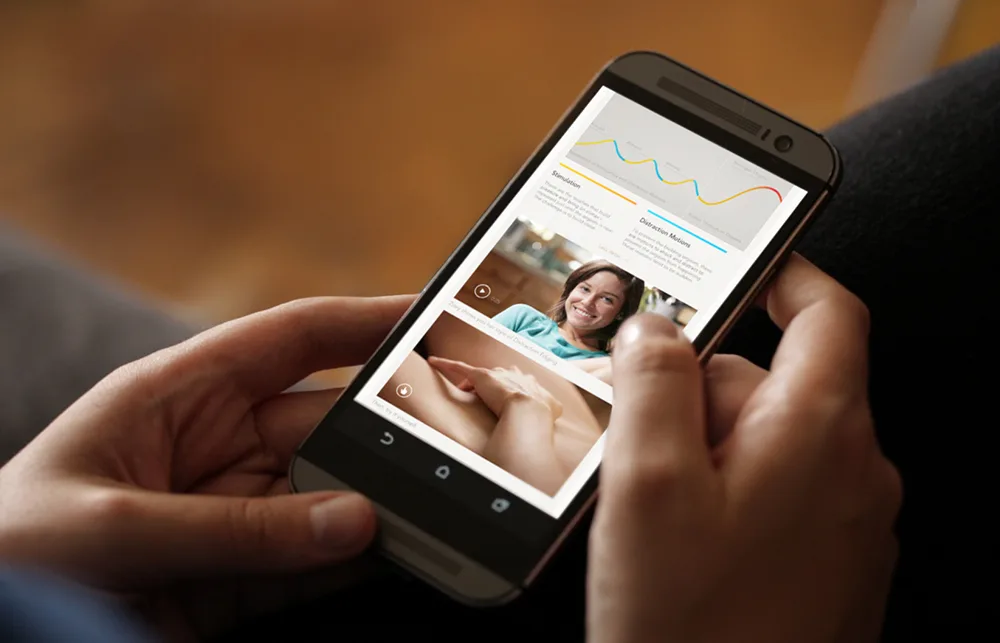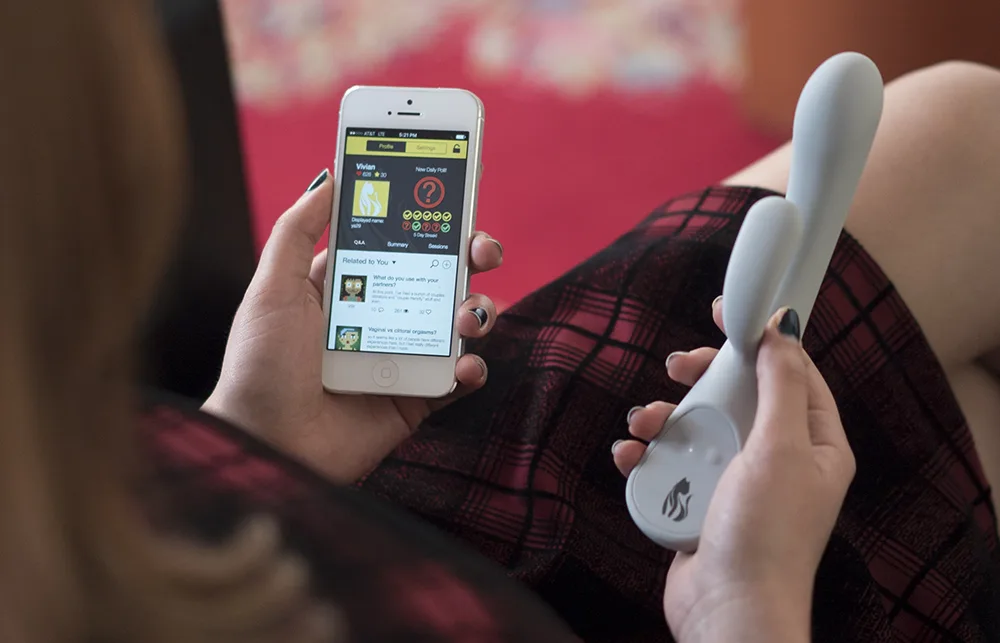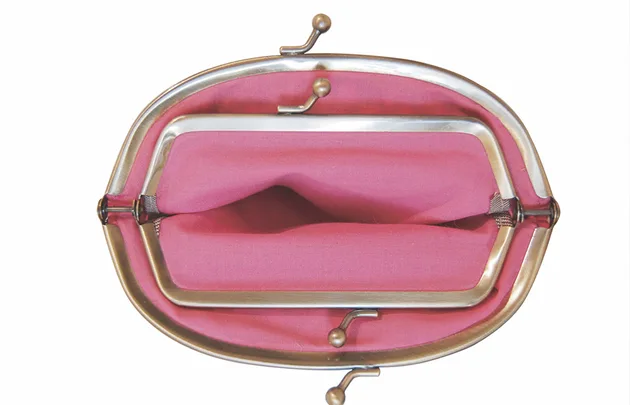Megan, 29, took out her credit card, ready to make a purchase. As she entered digits into the website’s checkout, she couldn’t wait to try out her exciting new buy. But marketing consultant Megan wasn’t snapping up designer shoes or a bargain fight – she was paying for a subscription to a new site that’s all about making sure women have better sex. She’s not alone. Since it launched last December, 40,000 men and women have also happily handed over $39 to join OMGYes.com, including actress Emma Watson who enthused, “I wish it had been around longer.”
The San Francisco company is one of the new enterprises keen to cash in on women’s new orgasm liberation movement. This “feminism of the bedroom” is a rebellion against a market that has, until now, been dominated by a male- centric adult industry. Even supposedly female-focused vibrators were way of the mark, with phallic product design (one word: veins) in packaging that showed women as porn-style caricatures.
But sex has a new buzz – in every sense. Cashed-up, discerning female consumers are fuelling demand for better sexual products, with women now the biggest area of “eroto-nomic” growth. Our untapped erotic potential, according to market analyst the Hewson Group, is valued at a staggering (or should that be shuddering?) $26 billion.
So if you haven’t yet visited OMGYes, do. Though if you’re reading this at your office desk, don’t do it now – if there’s one acronym to add to OMGYes’s name, it’s NSFW. The website details the 12 most popular ways 2000 women like their genitals touched and by detail, we mean detail: each hand-based technique is given a name, a methodology (where to press, direction of motion, rhythm), and a video tutorial of a real woman showing how it’s done. While the flms are closely shot, the clips have more in common with watching the Hemsley sisters cook buckwheat noodles than any of the surgically altered, legs akimbo, wild squealing of PornHub. There’s even the option to have a go – and get feedback – via touchscreen.

Still a radical concept even by 2016’s standards, the initial idea for OMGYes came about nearly three years ago when friends Lydia Daniller and Rob Perkins, a lesbian and a straight guy, had an unexpectedly graphic chat with mates about how to touch a woman.
“We realised how rare – and thrilling – it was to hear other people explain, literally, ‘Move this, this way, and it feels like this,’” says Perkins, a former digital strategist for Google and Nike. After searching for names for these female pleasure techniques, but finding none existed – because we had never been asked – they took up the mantle. “Our research is now going to doctors, health professionals – we’re filling a gap, not just in the internet, but in human under- standing of women’s pleasure,” he affirms.
They had surprisingly little trouble persuading real women to participate. When Alba, a 27-year-old teacher, agreed to be an “instructor”, she recalls a friend asking what she’d have to do on camera. “I said, ‘Well, first I explain how I masturbate, and then I show them.’” Pause. “Like … on my vagina.” That last word comes out theatrically, quietly. “And I go, ‘Why did I just whisper that?’ Because it’s like, hush-hush, a magical thing, but we just don’t talk about it. And it really bothers me because everybody does it, so why is that weird to talk about? If somebody out there picks up one thing that I say, they learn one thing, that’s worth it to me.”
Alba claims she wasn’t daunted by the prospect of thousands of subscribers watching her masturbate; quite the opposite.“I was excited!” she says. “When I saw their sample video, it was natural and treated women’s bodies with respect. It wasn’t until I was behind all the cameras that I got nervous, but the crew were so understanding that it quickly passed. I see the videos now and it’s like unveiling the magic of our bodies that has been seen as taboo, inappropriate and secretive for way too long.
“If my videos help just one woman increase her understanding and pleasure, then it’s all worth it”
Alba, 27, OMGYes.com instructor
I know there will be people who will use [the videos] for reasons other than what they are intended for,” she adds. “But I don’t care because if my videos help just one woman increase her under- standing, openness, communication and pleasure, then it’s all worth it.”
The reaction from users has been overwhelmingly positive. “When I heard about OMGYes I immediately wanted to try it out – and it’s awesome,” says Megan. “There just aren’t a lot of good models in our culture for how to talk about sex and pleasure in an honest way. Everything is hypersexualised, but we rarely talk about the mechanics of pleasure, so it’s empowering to hear women talk about ways they’ve learnt to please themselves and learnt to explain it to partners. It’s also cool to see different bodies in a non-pornographic setting.”
“A lot has changed about the world since the 1980s, but our understanding of female sexuality has not signifcantly advanced,” agrees tech entrepreneur Liz Klinger. “Women’s sexual health products are still underserved.” Her lightbulb moment came four years ago, while hosting “passion parties” that sold vibrators instead of Tupperware. Getting “so many sex questions that women had pent up for decades”, she realised they were desperate to learn more about their orgasm – they just didn’t know how to. Convinced getting answers about your sexuality should be attainable “anytime, anywhere, and on your own terms”, Klinger and a team of Google and Amazon-trained technologists developed a “smart vibrator”.
Called Lioness and slated for release later this year, it isn’t just about reaching orgasm, but knowing how you get there. Loaded with sensors that measure vaginal contractions, temperature and movement, it syncs with an app to give data on your ideal foreplay length and how your sex drive is affected by your menstrual cycle. “Our approach was also more of a practical one,” continues Klinger. “There’s a battery-life indicator so it won’t die on you mid-session and a travel lock to avoid accidental buzzing. Details that make owning a vibrator less of a disappointment.”
We’re fnally seeing female-centric pleasure products that work for us, says Judith Glover, a lecturer in industrial design (including 10 years studying sex toys) at Melbourne’s RMIT. “In the ’70s to ’90s, because design all came out of the adult industry it focused on the ideals of a heterosexual man,” she says. “Men thought, ‘What do women want? A penis.’ And because there was no competition, the industry became lazy, repeating the same inferior products.”
She believes another reason for the progress-lag in meeting women’s needs is because both adult and tech industries were slow adopters of feminism: “The tech industry is still 95 per cent young men: if they can’t get a gender balance in their industry, it’s harder to be concerned about women’s products in general.”

Thankfully, our new influence in sexual products – at the engineering stage and the spending one – means simply making a rubber replica of a penis or throwing pink at the problem no longer cuts it.
“As a sex toy user, I realised products I had weren’t made to the same stan- dards as other consumer electronics,” reveals Janet Lieberman. She’s co-creator of Eva, a hands-free clitoral stimulator (with arms that tuck inside your labia) to address the pleasure gap where women get half as many orgasms as men during sex. Notably, it looks absolutely nothing like a penis. “If a phallus is ever the opti- mal shape to get the job done, we’ll make a phallus, but there’s a whole range of ways to use a vibrator that aren’t met by that form,” explains Lieberman.
“The sex toy industry used to be porn’s ugly sister,” adds co-creator Alexandra Fine. “But vibrators can be a tool for empowering women.” The proof? Funding platform Indiegogo named Eva its most successful cam- paign, ever, from a female team.
Then there’s female industrial designer Ti Chang, who has co-created a brand of sex toys called Crave that are concealed in genius ways (resembling genuinely stylish droplet necklaces) not just airing the debate, but, well, wearing it. “I wanted to encourage women to embrace pleasure as part of our identity. The landscape of hideous toys had to be changed and, whether I succeeded or not, I had to try,” she declares.
Suki Dunham, a co-founder of OhMiBod – a company that syncs sex- toy vibrations with music – is also taking women’s sex toys out of the bedroom and into a social domain. The Panty Vibe slips inside your knickers so you can be pleasured out of the house – and by someone else. “On our app, when a user sets up Wi-Fi control they can choose to make their profle public or private. If it’s public, a total stranger can send you a request to control their vibrator or vice versa,” she explains. “The business world is finally beginning to take women’s sexual health seriously, and this will open up the discussion and people’s minds to new products and services. The new generation of 20-somethings aren’t burdened with the stigmas of yesteryear.”
But to isolate this as a Generation Z “thing” is to miss the female pleasure movement’s reach. “The Fifty Shades Of Grey phenomenon refects how we are not only curious, but eager to explore,” says Chang. “I would love to see vibrators on the same shelf as electric tooth- brushes. Even tech coverage that once focused on laptops, drones and fle stor- age now regularly highlights #SexTech.”
While we might hear the words “sex” and “internet” and jump to “porn”, Glover believes web technology is what will make our orgasm liberation stick – whether that’s creating approachable e-stores to sell smarter products, or as a communication tool “for women to fnd their tribe. We want to know about other women’s experiences, and that’s only going to get stronger.”
For decades, paying for an orgasm- boosting service has been tainted by whifs of a stale and male adult industry. Today, paying for a better orgasm is asserting power – not giving it up.
“Women are willing to pay for better orgasms, and men are increasingly willing to do what it takes (including pay money) to give women more pleasure,” explains OMGYes user Megan. “People spend tonnes of money on sexy lingerie, but something educational will have way more long-term benefts than a negligee. It’s a positive factor in your self-esteem – who doesn’t want more power and knowledge when it comes to their orgasm?”
She also envisages far longer-term benefits. “I hope it continues to evolve and if I have kids one day, I can point them to something like this instead of a dry book,” comments Megan. “It’s good to teach young people about safe sex and consensual sex and all that, but we also need to teach women to ask for their pleasure and their partners how to go about giving it. We need to make sex about both genders.”










